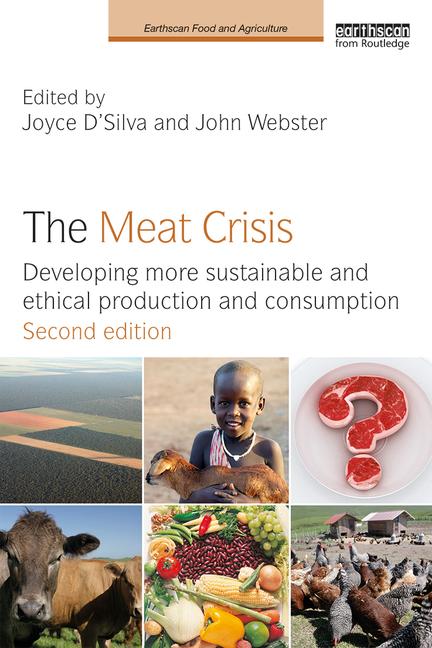First-step advancements

Slaughterhouses have seen their fair share of technological advancements the last 20 years, with many implemented after the Jack in the Box outbreak of 1993 and subsequent 1994 Hazard Analysis and Critical Control Points (HACCP) development plans. Slaughter equipment also has evolved—particularly in the past decade—in its relationship to worker safety, ergonomics, food safety and animal welfare.
According to “Special report: Maintenance of good animal welfare standards in beef slaughter plants by use of auditing programs,” written by animal welfare expert
Dr. Temple Grandin and published in the Journal of the American Veterinary Medical Association (Vol. 226:370-373, 2005), restaurant companies have been leading the way in animal welfare by auditing slaughter plants for their treatment of animals, which has lead to improvements in cattle handling and stunning.
Since 1999, McDonald’s Corp., Wendy’s International and Burger King Corp. have all worked with Grandin on the implementation of animal-welfare auditing programs.
“Animal welfare has improved dramatically, even in just the last five years,” says Keith Belk, professor of animal science, Colorado State University, based in Fort Collins, Colo. “Temple Grandin [also a professor of animal science at Colorado State University] has had a huge impact on this, as her curved cattle chute system [a more efficient and humane holding pen] is more widely used now.”
Most companies also use Grandin’s center track restrainer system—the floor moves away and the cattle is supported on a center bar—as part of their slaughter practices. Stunning systems are generally used with most animals. According to Kurt Vogel, Ph.D. candidate and graduate research assistant for Livestock Behavior and Welfare, Department of Animal Sciences, Colorado State University, the newest innovations in captive bolt and electrical stunning systems are devices that monitor bolt speed and stunning efficacy, respectively. He adds that slaughter equipment suppliers have been manufacturing bolt velocity testers for their captive bolt stunners for several years now. In addition, some of the new electrical stunners for sheep and pigs are equipped with voltage and current monitoring devices that can record to a computer.
“These systems also have the ability to detect abnormal stuns that may not normally be detected by the stunner operator,” says Vogel. “This allows a re-stun to occur before an animal has the chance to regain sensibility.”
Investigating new methods
Poultry plants generally employ electronic stunning (low current, high voltage or high current, low voltage) with their live hang methods today, but some are starting to switch to controlled-atmosphere stunning systems, because they improve working conditions for employees and produce a more humane method of slaughter for the birds.
“These systems allow birds to be stunned in their transport cages and shackled while unconscious,” says Vogel. “The birds are much easier to handle, which reduces employee stress and injury potential.”
The Georgia Tech Research Institute (GTRI) is currently working on improving the live hang system, but fundamentally the system will always have problems, says Gary McMurray, chief of the GTRI Food Processing Technology Division, based in Atlanta.
“The live hang process is one of the biggest ergonomic and safety issues in the plant, let alone of the dirtiest, nastiest jobs, which has high turnover and is difficult to staff,” says McMurray. “Industry professionals have been trying to improve it for 50 to 60 years, but no one has found a solution for it yet.”
He notes that plant employees using the electronic stunning process have to make sure the water in electrical water bath stunners is clear and the electronic system is putting out the right amount of currents.
“Plants are doing a good job with this; it’s just a little more complicated process,” says McMurray.
Reducing workplace injuries
Many changes also have been made to reduce the risk of electrical shock injury in electrical stunner operators, notes Vogel. Additionally, many of the new stunning wands are designed with grips and application angles that are more ergonomically friendly.
Moreover, a number of the new pneumatic models of captive bolt guns have nearly infinite handle placement and angle options, which help to reduce repetitive motion injury for stunner operators, says Vogel.
Dakota Turkey Growers electronically stuns its birds and has had very few issues with its slaughter equipment, such as its neck cutters, stunning system, scalding and plucking operations, says Tom Shields, plant engineer, Dakota Turkey Growers, based in Huron, S.D.
“We also have very few problems with ergonomics here as far as developing issues and injuries,” he says.
Butterball has been using automated gizzard splitter systems, which also help reduce ergonomics issues with its employees.
“After the birds are stunned, the gizzard system utilizes high-pressure water or blades for cutting the gizzards versus cutting by hand, which reduces repetitive motion injuries,” says Jeff Evers, senior maintenance manager, Butterball LLC, based in Mt. Olive, N.C.
During the stunning process, Butterball employees stand on a platform that is mounted on an air bag system—“similar to a trailer being pulled down the highway with air bags,” says Evers—to soften the pressure to their backs.
Also, Butterball employs automatic neck-breaker systems to remove repetitive motions from the slaughter process and a neck-cutter gun system that is held with the use of a retract system to absorb part of its weight for employees, says Evers.
Maintaining equipment
The key to maintaining electrical stunning systems is to keep all circuits clean and dry, and make sure the contact electrodes are shiny.
“Generically speaking, pneumatic captive bolt guns should be disassembled and cleaned at the end of each shift, and bolt velocity should be checked at each break at a minimum,” says Vogel. “In smaller plants that use cartridge-fired guns, cartridges must be kept clean and dry and the guns should be cleaned daily on operating days.”
Butterball maintains its equipment by having the correct computerized maintenance management system (CMMS), built from the data learned and implemented through breakdowns and/or new service bulletins from the original equipment manufacturers (OEMs). The company also conducts a yearly review of its CMMS to ensure that the data has value and a performance impact, and challenges the OEMs from the service tech visits to review what is in place versus what should be in place, says Evers.
“The turkey industry has not been able to achieve the same type of automated equipment as the chicken processors have in place,” he notes. “Given the size of the turkeys and the size of equipment that would be required to achieve the same results as chickens, most facilities would have to be substantially renovated to allow for it.”
According to Shields, Dakota Turkey Growers spends no more than one hour a month—if that—fixing equipment problems.
“We have very little down time, which we rave about because companies are constantly battling that,” he says.
The turkey processing and slaughtering plant is also going green, by changing its lighting, stacking economizers for the boiling system, using a carbon dioxide economizer and decreasing exhaust and its carbon dioxide emissions, says Shields.
“The payback is relatively quick, and the tax break is a perk to go with it,” he says.
Looking for a reprint of this article?
From high-res PDFs to custom plaques, order your copy today!









